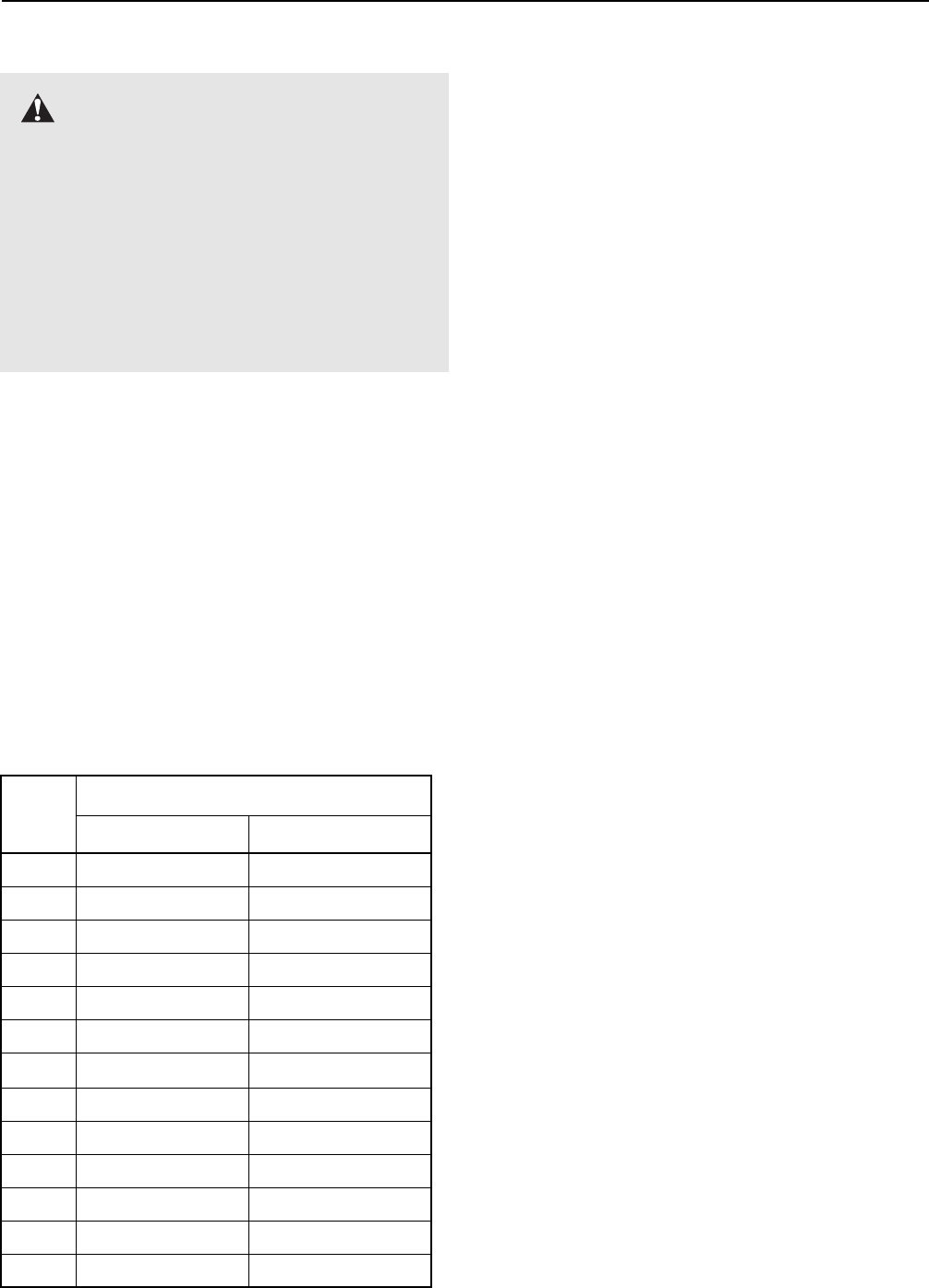
25
CONDITIONING GUIDELINES
The following guidelines will help you to plan your ex-
ercise program. For more detailed information about
exercise, obtain a book or consult your physician.
EXERCISE INTENSITY
Whether your goal is to burn fat or strengthen your car-
diovascular system, the key to achieving the desired
results is to exercise with the proper intensity. The
proper intensity level can be found by using your heart
rate as a guide. For effective exercise, your heart rate
should be maintained at a level between 65% and 85%
of your maximum heart rate as you exercise. This is
known as your training zone. You can find your training
zone in the table below. Training zones are listed ac-
cording to age and physical condition.
Burning Fat
To burn fat, you must exercise at a low intensity level
for a sustained period of time. During the first few
minutes of exercise, your body uses easily accessible
carbohydrate calories for energy. Only after the first few
minutes of exercise does your body begin to use stored
fat calories for energy. If your goal is to burn fat, adjust
the intensity of your exercise until your heart rate is
near the low end of your training zone as you exercise.
Aerobic Exercise
If your goal is to strengthen your cardiovascular sys-
tem, your exercise must be Òaerobic.Ó Aerobic exercise
is activity that requires large amounts of oxygen for
prolonged periods of time. This increases the demand
on the heart to pump blood to the muscles, and on the
lungs to oxygenate the blood. For aerobic exercise,
adjust the intensity of your exercise until your heart
rate is near the middle of your training zone.
WORKOUT GUIDELINES
Each workout should include the following three impor-
tant parts:
A Warm-upÑWarming up prepares the body for exer-
cise by increasing circulation, delivering more oxygen
to the muscles, and raising the body temperature.
Begin each workout with 5 to 10 minutes of stretching
and light exercise to warm up.
Training Zone ExerciseÑAfter warming up, increase
the intensity of your exercise until your heart rate is in
your training zone for 20 to 60 minutes. (During the
first few weeks of your exercise program, do not keep
your heart rate in your training zone for longer than 20
minutes.) Breathe regularly and deeply as you exer-
ciseÑnever hold your breath.
A cool-downÑFinish each workout with 5 to 10 min-
utes of stretching to cool down. This will increase the
flexibility of your muscles and will help to prevent post-
exercise problems.
Exercise Frequency
To maintain or improve your condition, complete three
workouts each week, with at least one day of rest be-
tween workouts. After a few months, you may com-
plete up to five workouts each week if desired. The key
to success is to make exercise a regular and enjoyable
part of your everyday life.
WARNING: Before beginning
any exercise program, consult your physi-
cian. This is especially important for individu-
als over the age of 35 or individuals with pre-
existing health problems.
The heart rate monitor is not a medical de-
vice. Various factors may affect the accuracy
of heart rate readings. The heart rate monitor
is intended only as an exercise aid in deter-
mining heart rate trends in general.
20 138-167 133-162
25 136-166 132-160
30 135-164 130-158
35 134-162 129-156
40 132-161 127-155
45 131-159 125-153
50 129-156 124-150
55 127-155 122-149
60 126-153 121-147
65 125-151 119-145
70 123-150 118-144
75 122-147 117-142
80 120-146 115-140
Age
Unconditioned Conditioned
Training Zone (Beats/Min.)


















